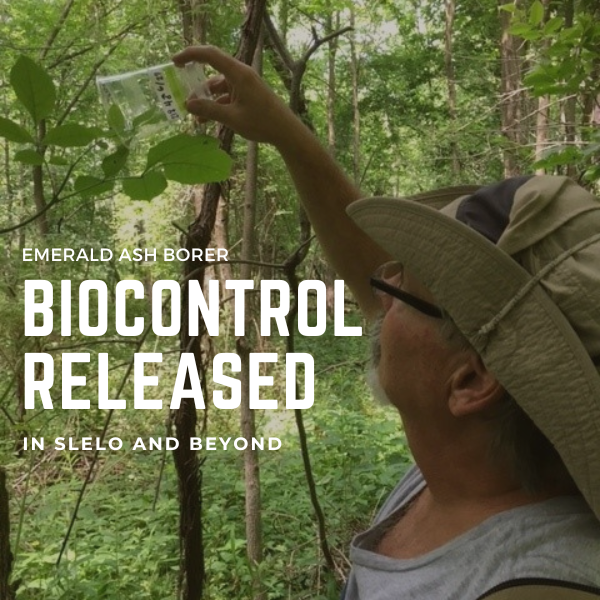This article was featured in the 2022 summer newsletter by Timothy Morris-SUNY ESF.
The emerald ash borer (EAB) has swept its way across New York State. As of 2022, it can be found in practically every county. However, biological control agents released specifically to target EAB are following close behind. As EAB is non-native, it faces reduced mortality in our un-adapted ecosystems. This has led to extremely high populations and high levels of tree mortality. Reuniting EAB with its natural enemies through the release of biocontrol agents can provide a means to reduce its population. Thirty-eight counties across the state contain at least one of the four federally approved biocontrol agents. Three of these species are currently present in the SLELO region. These small parasitic wasps known as parasitoids include Oobius agrili which targets EAB eggs, as well as Tetrastichus planipennisi and Spathius galinae which kill EAB larvae. These parasitoids underwent rigorous testing to ensure they would specifically target EAB.
Due to the extremely high number of EAB already on the landscape, the persistence of todays’ mature ash trees due to biocontrol alone is unlikely. The program hopes that biocontrol agents will be able to protect the next generation of ash trees, as parasitoid and EAB populations become more aligned. As these parasitoids establish alongside young regenerating ash, they can suppress EAB populations as trees grow to replace dead overstory ash. Our current research across the state has found a persistent regenerating layer of ash seedlings and saplings, indicating ample opportunity for regeneration. Our parasitoid populations have established well in forests both recently infested with EAB, and those which have already suffered significant tree mortality. Parasitoids have demonstrated a strong ability to disperse from their release locations to nearby ash forests. We have quantified significant EAB mortality induced both by parasitoids and our local woodpecker populations. Current results indicate the mortality of EAB is enough to reduce reproductive rates close to, or below, replacement levels. This indicates static or falling pest populations within our regenerating ash forests. While the future of ash is still uncertain, these results provide promise for the regeneration of the species in our forests. Future parasitoid releases are planned across the state, including in the SLELO region.

Above: Instead of finding an emerald ash borer larvae at the end of its feeding gallery, we instead find a brood of biocontrol agent Tetrastichus planipennisi. Photo provided by Timothy Morris-SUNY ESF.



